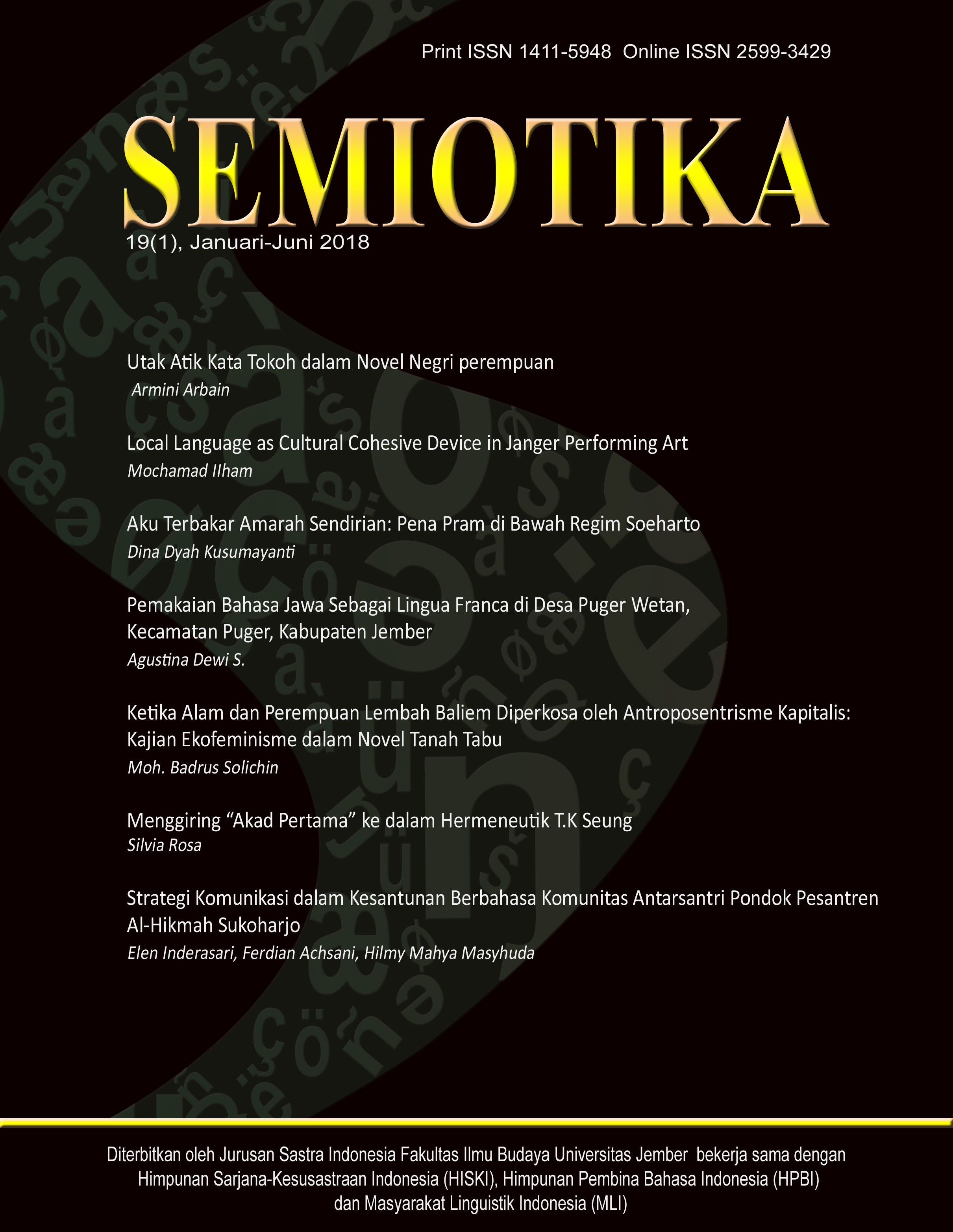KETIKA ALAM DAN PEREMPUAN LEMBAH BALIEM DIPERKOSA OLEH ANTROPOSENTRISME KAPITALIS: KAJIAN EKOFEMINISME DALAM NOVEL TANAH TABU
DOI:
https://doi.org/10.19184/semiotika.v19i1.7049Keywords:
capitalistic anthropocentrism, ecofeminism, nature, woman, Baliem Valley (Papua)Abstract
This research was conducted to investigate capitalistic anthropocentrism to nature and woman in Tanah Tabu. Here, Freeport is an actor of capitalistic anthropocentrism while Baliem Valley and female character in Tanah Tabu are representatives of exploited objects. By analysis, the theory of ecofeminism by Vandana Shiva is used here to answer the questions of the research. Therefore, the implication is to study act of capitalistic anthropocentrism of Freeport examined based on the purpose of western colonialism (United Stated of America) that came to Papua by developing mining industry. In the process, the mining industry run by capitalist faced the problem being tried to solve by using modern science and spirit of developing civilization as an effort to cover their act. In this case, ecofeminism shows role of women in struggling their exploited home (nature). This fact appears from relationship between women’s domestic life and nature that cannot be vanished.The discussion results in this study is firstly, the character of capitalistic anthropocentrism by Freeport is known from their motives in developing civilization by modern science, modernism toward conservatism, and colonialism. Secondly, ecofeminism puts female character Tanah Tabu in dualism of role; as a victim and a fighter against capitalistic anthropocentrism. Lastly, the reason why the female character is presented here is because ecofeminism views nature is as a woman who is pregnant and delivers life.
Downloads
Downloads
Published
Issue
Section
License
SEMIOTIKA has CC-BY-SA or an equivalent license as the optimal license for the publication, distribution, use, and reuse of scholarly work. Authors who publish with this journal retain copyright and grant the journal right of first publication with the work simultaneously licensed under a Creative Commons Attribution-ShareAlike 4.0 International License that allows others to share the work with an acknowledgment of the work's authorship and initial publication in this journal.
Attribution-ShareAlike
CC BY-SA


